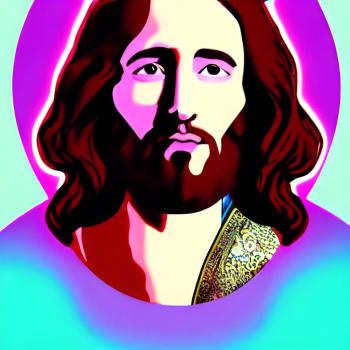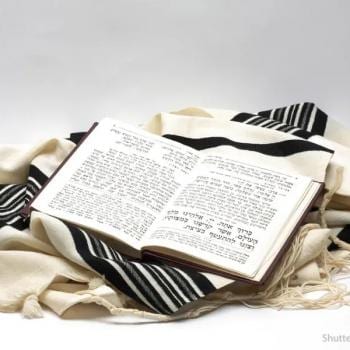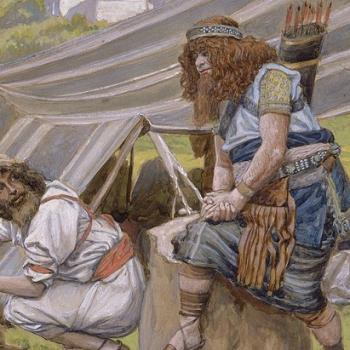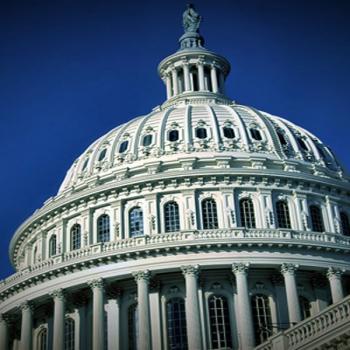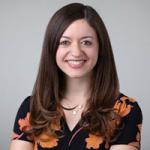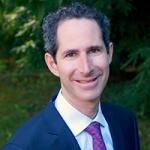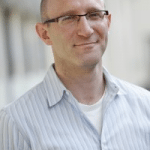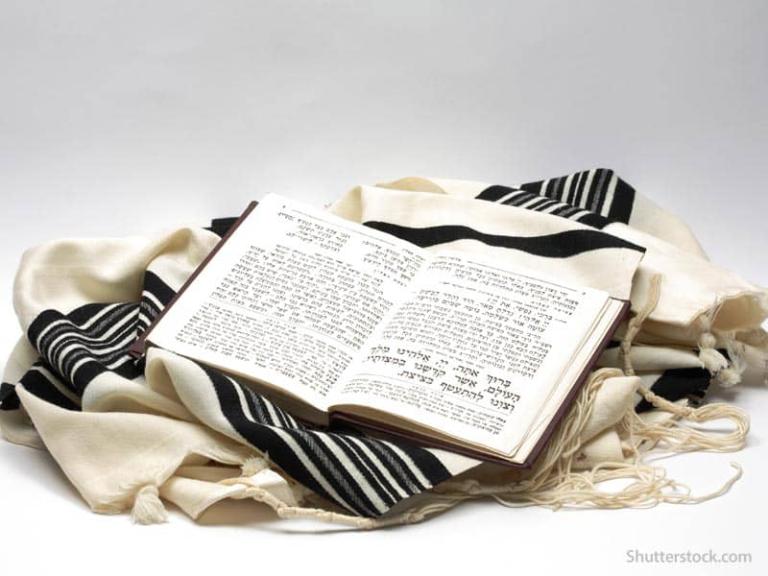
By Dr. Laura McGuire
Judaism and Unitarian Universalism have deep intertwining roots. Their inherent commonalities have laid a strong foundation, past and present. For those of us who identify as Jewish UUs, these commonality currents take on more meaningful importance.
So why have UU spaces long been a spiritual haven for progressive-minded Jews and how this relationship can continue to evolve into the future?
Going back to the dawn of the Unitarian movement in Eastern Europe, Jews have been able to find fellowship with Unitarians, who faced persecution and hostility from trinitarian Christian groups that sought to divide themselves from Jesus’ Jewishness. Understanding the history of the UU community’s ties to Judaism allows us to forge a path forward for the future. As more and more rabbis become UU faith leaders and additional resources for Jewish interfaith families expand, we see just how important it is to strengthen these connections for the good of both the UU and Judaism.
On a personal note, I formulated my roots in the Unitarian Universalism because of my journey back to my ancestral home in the tribe of Israel. In the fall of 2021, I began my journey as a seminarian, quite certain that I would serve as an interfaith Christian in the Quaker community. A few months later, as I explored scapegoat atonement theory and ancestor veneration, I started to feel my already loose grip on Christianity letting go.
As I released this idea that Jesus was some form of a God or a savior of humanity, I came to have a more profound longing to answer the questions that kept popping up about my mother’s ancestral line. I soon gathered information that would fully affirm that her ancestors were Jews who lived in the Mediterranean during the Inquisition. Long-held traditions, recipes, and superstitions- that we had not previously been able to explain- now made sense as the realization of their crypto-Jewish culture came into the light. I knew that the fact that I had decided to go to seminary while working at a Jewish school was no coincidence, but evidence of the divine intervention of my ancestors led me to this moment.
This new information led me to the rationale that I needed to walk through this door of personal transformation, despite my fears and hesitations about making such a significant life change.
As I continue on my journey in earning my Master of Divinity and looking into rabbinical schools afterward, I continue to find unbounded peace in being a UU faith leader in the near future. When I begin working in community ministry, I need to make sure that I am in a space that embraces people like myself. As DNA testing increases, more and more people realize that they are part of the B’nei Anusim or the descendants of forced Jewish converts. It has led to a tidal wave of returns/conversions, which is wonderful news. I sincerely believe that people returning to their Jewish heritage is part of the vital work that is decolonizing religion. I feel strongly that this process is integral to healing epigenetic ancestral wounds. For this to occur, there needs to be more discussion around creating spaces where people can come up with challenging questions and complex identities and be included in these nuances.
The Unitarian community, founded in the 16th century in Eastern Europe, was initially a space of intentional bridge-building between the new Christian communities and their Jewish and Muslim neighbors. Unitarians rejected the idea that Christ was God or that there was a way to have multiple gods in one. This provided them with the ability to hold space for their Abrahamic siblings and discuss what it meant to worship the same God in such a similar way. Where other Christian communities were building walls, primarily founded on their perspective that there was only one way to enter eternity with the God of Abraham, Unitarians could sit in a place of spiritual humility that was an open the door to their Jewish neighbors.
When the Trinitarian doctrine was commented as mainline belief, first by creating the first Christian creed at the Council of Nicaea and then officially named as three distinct persons at The Council of Constantinople, this formed a desire for the further distinction of Christianity from its extended religious family. After the Council of Nicaea, Emperor Constantine, whose prerogative was likely a mix of religious fervor and empire-building ideologies, officially severed ties with Jesus’ religion by no longer allowing Christians to follow the Jewish calendar and encouraging followers to no longer have any relationship to “the detestable company of Jews (Percival pg. 54).”
The shadows of these councils still cast a harmful image on the face of global Christianity today. These sentiments have sewn seeds of hatred for generations to come. For a Jewish rabbi’s legacy to become one of antisemitism is a sin that has yet to be fully addressed, much less atone for, by the Christian majority. We cannot separate our Christian roots from how Jews the world over have been targeted by hatred and genocide—understanding where this cruelty manifested is the first step in addressing it holistically.
Islam mindfully made Jewish traditions and Christianity’s Prophet interwoven into their emerging faith. In the Islamic state of Medina, the Prophet Muhammed (peace and blessings be upon him) instructed his citizens to be at one with one another (Ritchie pg. 3). The Quran has a book explicitly dedicated to Jesus’s mother, Mary, and tells many stories, not in the gospels, about Jesus’ life. Yet these emerging Christian communities chose not to return the favor to acknowledge Muhammad (peace and blessings be upon him) as anything but a problem and cut any lingering connections to their Jewish forebearers.
Resources from this time also reflect the beauty of the connection shared between the monotheistic communities. We see evidence of Unitarian, Jewish, and Muslim theologians having intellectual discussions around their commonalities more than their differences in the Ottoman empire. Theologian and traveler, Paleologos wrote of a time and places where this Abrahamic family broke bread together in fellowship instead of division. This reality would be fleeting and not often reproduced (Ritchie, pg. 18 &19).
Continuing in Europe, theologian innovators such as Michael Servetus and Erasmus sought to carve out spaces that would benefit reform Jews, Unitarians inspired by the life of Christ, and those, like the B’nei Anusim, who existed in the margins. Erasmus and Servetus were instrumental in decolonizing the Torah from the New Testament (Ritchie pg. 40 & 41). Through extensive research and documentation, they proved that much of what was said to be a foreshadowing of Jesus’ messianic prophecy was based on additions to holy texts that came centuries after they were initially written. Servetus was particularly keen at deciphering what was rooted in anti-Jewish antisemitic beliefs and what was scripturally founded. Because of this work, he became a Unitarian, vehemently denying the ability to embrace a Trinity as a purportedly monotheistic religion.
Universalism began with the enlightenment, primarily its foundation in North America. In a similar vein, Reform Judaism began to emerge from the enlightenment in Germany. The German enlightenment embraced theism and religious integration with rational thought and scientific paradigms. German enlightenment philosophers, such as Christian Thomasius, believed that scientific revelation should revitalize religion, not be its demise (Anhert). Universalism’s ability to embrace all faith paths, including humanism which does not include deity frameworks, made it an additional safe haven for those seeking a new way of communing with religion and/or God.
In this time and place, Jewish scholars began to reimagine their own faith. Rabbi Sonnenschein was one of the instrumental bridge builders between the Unitarian Church in The United States and Reform Judaism (Hart-Landsberg & Keller pg. 38). In the 1860s, he pointed out the essential parallels between reform Judaism and Unitarianism- that each was founded on a desire to ring tolerance, freedom, and the religion of humanity to the larger world. Like many Jewish UUs today, he found several obstacles in pursuing this path; debates between founding figures, holy days, and Zionism continued to plague his efforts. Universalist faith leader, but for reasons undisclosed was denied (Hart-Landsberg pg. 41).
When the Universalist and Unitarian communities came together, they both had already set a foundation for Jewish inclusion in their spaces. As Jews sought to continue to rethink the way that they connected with Hashem, many additional parts or forged to combine these different communities. Reform Judaism, founded by Moses Mendelssohn, sought to reimagine how Jews connected to their history and their loss-making the Jewish experience more personal and willing to evolve with scientific innovation.
The reform Judaism website echoes the history of universalism in liberal Jewish movements, “The universalist tendency stressed the common values and behaviors they shared with their non-Jewish neighbors (Englander).”
Jewish Universalists Today
Today, many Jewish UUs continue to embrace the historical fellowship between these Semites and UUs and find ever-evolving reasons to remain in these borderlands. Jewish Voices in Unitarian Universalism (2014) is a collection of essays that provide insight into the common desires and difficulties experienced by those who identify as Jewish and UUs. Typical desires, or experiences, that cause people who identify as Jewish to come into the Unitarian Universalist fold are centralized on an experience to defy limiting boundaries. Faith should be liberatory; it should allow us to break free from other societal constraints. Yet, far too often, religion only feeds into human limiting beliefs and adds layers of gatekeeping that inhibit our ability to express our authentic selves.
Those who grew up in interfaith families or had internal interface leanings are told that this is not acceptable. To be a “good” Jew is to choose a singular path, worship among only those who follow the Torah, and practice the mitzvot.
As one Jewish Universalist states in the book Jewish Voices in Unitarian Universalism, “Unitarian Universalists are the only people I know who will let me be the Jew I am” (pg. 13). For children and families, this is particularly painful. To ask them to choose one faith tradition exclusively is to choose one parent, one family, in their mosaic of familial connection. The Unitarian Universalist Church is a space where they can finally exhale. No one asked them what they believed and required to turn off all is around that. Instead, walls are broken down, and new pathways for intersecting beliefs are forged.
Common obstacles faced by Jewish UUs are a feeling of not being able to voice their Jewishness in its fullness within the Unitarian Universalist community. For example, wanting to worship on Shabbat might not be an easy option in Unitarian Universalist spaces with predominantly Christian attendees. Kosher food options are often not available at Unitarian Universalist events. And Christianese, or vernacular based on Christian normatively, is far too familiar. Simply calling a Unitarian Universalist faith community a ‘church’ can be problematic if not painful in and of itself. The challenge here is to think expensively. To offer more options based on awareness of what Jewish attendees need. And to reimagine the language that we use around the space that we hold on to the beliefs that we share.
One community I have not seen discussed in the UU resources I encountered is the B’nei Anusim, descendants of crypto-Jews/Marranos/Conversos. Current books on the B’nei Anusim experience are positioned from an Orthodox Jewish lens (Leon). Authors such as Rabbi Stephen Leon operate from an Ashkenazi lens and see the B’nei Anusim as vital to fulfilling the prophecy that Abraham’s descendants would be scattered and as numerous as the stars (Leon, pg. 49-51). Yet, in the same breath, they deny that these crypto-Jews should be welcomed into the tribe easily, requiring them to do extensive research on their genealogy and go through numerous requirements to be entirely accepted. But as Rabbi David Kunin explains, this is hurtful to the Jewish people as a whole and does not include Sephardic perspectives on halacha (Jewish law) around returning Jews (Kunin).
He states, “Due to the unique history of the Anusim who have maintained their Jewish identity, beliefs, and practices secretly and often to their peril, and since in the words of R. Solomon Duran, the Anusim for all time are part of the Jewish people, no conversion ceremony is necessary, nor is it necessary to investigate the genealogy of the returning Anusim to demonstrate a clear matrilineal line of descent. It is advisable, however, to provide and encourage ongoing adult education as we do for all Jews, so that the returning Anusim can play a full and fulfilling role in synagogue life. It may also be useful to develop a ritual of return within the congregation as a form of celebration and formalization of the return.”
Others are personal narratives, such as Rabbi Elisheva Diaz’s book Wrestling for my Jewish Identity, but which do not have Halachic guidelines for how to return to Judaism. Neither explains how to merge one’s former faith identity, mainly in Christianity, with the new Jewish mindset. Interestingly, in Rabbi Diaz’s personal narrative, the author, who professes to have proudly left Christianity far behind her, also mentions that she still feels there is power in the name of Jesus. There is no further context for this, but I am sure others feel similar kinds of internal theological conflict.
Other B’nei Anusim who have returned to Judaism but still love much of what they gleaned from Christianity has been denied Aliyah (the law of return to Israel) and told the Israeli government that they are not “Jewish enough” to be welcomed home.
We, the B’nei Anusim, are complicated Jews, no matter how passionately we embrace Judaism and deny Jesus of Nazareth as a divine being. He is still a pivotal figure in many of our lives and a visual representation of love-made flesh. Trying to connect to a deity with no visual representation is profoundly challenging. We may also miss other relics of our Christian upbringing, such as the Saints or Blessed Mother. Singing songs in English with modern tempos and meaning can also feel a significant loss. If we express these feelings, we are told not to return to Judaism, that being a Jew is “too much” for us if we have these internal conflicts.
We are also often isolated in this journey from our family and community. Many who learn of their Jewish ancestry do not wish to return and may feel fearful of family members denying Jesus as Christ. The emotional tug of war between familial genetics and a desire to avoid hellfire can create fissures in kinship dynamics. This additional emotional upheaval means that reverts to Judaism need support more than most Jews and other kinds of converts. As more and more B’nei Anusim find their Jewish roots through genealogy, particularly in South and Central America, the need for space to explore these inherent misgivings is paramount to spiritual wellness and Jewish identity.
For this reason, I wish to call on the Unitarian Universalist community to make new inroads for these reverts. Only in a UU faith community can B’nei Anusim make peace with holding space for what would otherwise be seen as dichotomous theologies. No one will tell you that specific thoughts or longings for familiar traditions make you less of a Jew, nor will they pressure you to have your family come along on the same spiritual journey. As the only returning B’nei Anusim in my family, I say this from a place of painful personal experience. In a synagogue, I must remind family members not to wear a cross or bring up their beliefs in the trinity.
When I try to visit my family members’ churches, I can no longer sing the familiar songs that focus on Jesus as God-head or substitutionary atonement. In a UU space, we can all take a deep exhale. In all our complexities, we can be ourselves together as one. My children will never be asked to choose or given odd looks for celebrating multiple holidays or wearing both a Kippah and a crucifix.
The ability to show up, individually and together, as our whole selves, unapologetically, is sacred. If we are all reflections of the divine and if every faith tradition is a facet of the face of G-d, then communities that embrace this truthfully are holy grounds. Let us take off our sandals, borders, and biases and break bread together—united in the universality of how the metaphysical is known to each of us.
Citations
Anhert, T. (2006). Religion and the Origins of the German Enlightenment. University of Rochester Press
Diaz, E. (2017). Wrestling for my Jewish Identity. Friesen Press
Endglander, L. (n.d. ) History of Reform Judaism and a Look Ahead. Taken on 4/26/22 from https://reformjudaism.org/beliefs-practices/what-reform-judaism/history-reform-judaism-and-look-ahead-search-belonging
Hart-Landberg L. & Keller, M (2014). Jewish Voices in Unitarian Universalism. Skinner House Books
Leon, S. (2017). The Third Commandment and the Return of the Anusim. Gaon Books
Ritchie, S. (2014). Children of the Same God; the historical relationship between Unitarianism, Judaism, and Islam. Skinner House Books
Dr. Laura McGuire is a survivor, sexologist, and seminarian. They currently work as an adjunct professor at Widener University and are the CEO of the National Center for Equity and Agency where they develop certifications in trauma-informed care, prevention education, and restorative justice. They are the author of Creating Cultures of Consent and are publishing an additional guidebook on preventing sexual misconduct for universities in 2022. They are the descendant of the Anusim- or those forced to covert under the inquisition. Raised as a Christian they now identify as a Jewish Universalist, the perspectives of which they now bring to their Masters of Divinity studies at Earlham School of Religion.





